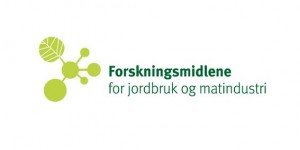Sykdomskontroll og forbedret dyrevelferd ved hjelp av genetiske markører: En pilotstudie av osteochondrose og Birkelandfraktur hos hest
- Status Avslutat
- Projektnummer H1247154
- Ansökningsår 2012
- Slutrapport 30 september 2018
- Organisation Universitetet for miljø og biovitenskap (UMB)
- Huvudsökande Gunnar Klemetsdal
- E-postadress Gunnar.Klemetsdal@umb.no
- Telefon ?
Ett mål i prosjektet var å verifisere QTL funnene som tidligere er rapportert av Lykkjen og medarbeidere på osteokondrose og Birkelandfraktur på varmblodstraver. Ved å øke materialet betydelig falt mange QTL bort, og bare en QTL på kromosom 28 var signifikant. En vil nå søke å tilnærme det mulige underliggende genet ved å utnytte kandidatgener. Med bare ett signifikant QTL funn, bør fremtidig forskning på OCD og POF ikke bare rettes inn mot å utnytte noe av genetisk varians ved å fokusere en QTL tilnærming, men heller ved å utnytte en mye større andel av genetisk variasjon gjennom genetisk seleksjon. Hos hest bør dette gjennomføres over populasjon av travere, men også inkludere data på varmblods ridehest. Relevante data vil i store trekk finnes i forskjellige forskningsprosjekt. Et slikt over-populasjons initiativ på OCD kan sees på som en modell for andre sykdommer, og andre arter, som heller ikke har etablert sykdomsregistering.
Prosjektets mål er å verifiserer våre nåværende funn av QTLer med effect på osteochondrose og Birkelandfraktur hos varmblodstraver. Prosjektet tredobler størrelsen på forsøksgruppene i de genom-vide assosiasjonsstudiene. Prosjektet vil også være et springbrett for å komme inn i internasjonalt sammarbeid, enten for å finne QTLer, eller i genomisk seleksjon.
Osteochondrosis dissecans (OCD) and Birkelandfracture, are diseases mainly in the hock and fetlock joints of varmblooded horses, respectively, that increase the costs in the horse industry and affect animal welfare negatively, since many horses have to be operated. The diseases contribute to increased costs for treatment and restitution, reduced performance and income as well as reduced value of the animal itself. High frequencies of the diseases illustrate the importance of revealing the causative nature of OCD and POF.
Selection can be used as a preventive means towards such diseases, either on the quantitative trait loci (QTL) itself or on estimated breeding values, by summing the effect of all alleles into a genomic breeding value. The project aimed at verifying QTL findings that have been reported by Lykkjen and coworkers for OCD and POF in the Standardbred trotter. By considerably increasing the size of the material of Lykkjen and coworkers, only the finding of a QTL on chromosome 28 still held promise as a QTL. Our approach now is to use the candidate gene approach to possibly reveal the underlying causative gene. With only one QTL left to consider, this indicates that future research towards improving the genetics of OCD and POF should be approached by not only utilizing some of the genetic variance through a QTL approach, but rather to utilize more of the genetic variance through genomic selection, across populations of trotter, but also including data from riding horse populations. Such data will in main be available through research projects. Such an across-population initiative on OCD can be considered a model for other diseases, as well, and even for other species that do not either have a disease recording system in place.
In the same material, we also estimated the effect of inbreeding on racing performance. The effect was negative, i.e. that racing performance in Standardbred trotters is concluded depressed by inbreeding In corollary, crossbreeding is encouraged, and is one explanation of the recently increased contribution of French trotter in the Norwegian population of Standardbreds.













